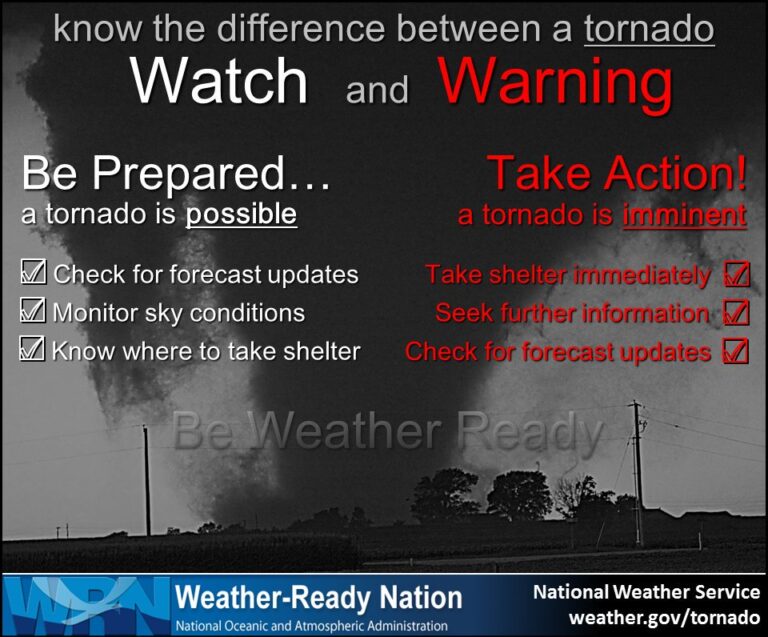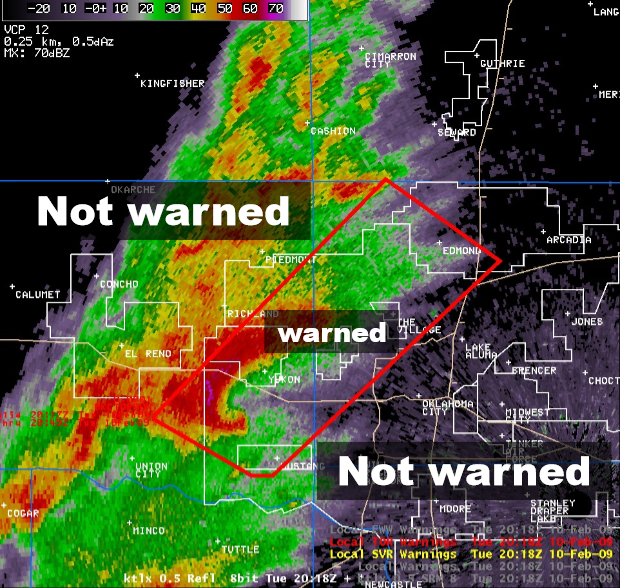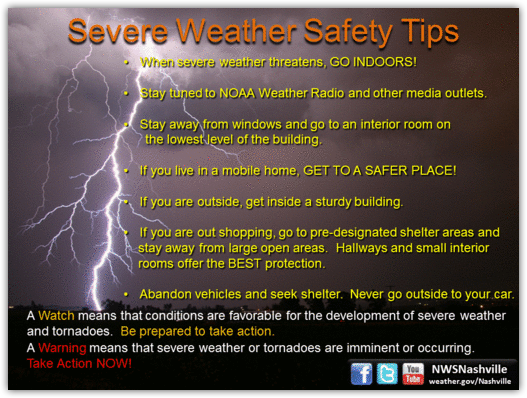
A Tornado Watch means Be Ready because conditions are favorable for a tornado.
Be sure you can very quickly get to a safe place if a tornado warning is issued. Know where you are on a map so if a warning is issued, you know whether it applies to you.
While under a Tornado Watch, mobile or manufactured home residents should closely track approaching storms and timely relocate to another, safer structure well before the storms arrive. If you wait for a Tornado Warning, you may not have time to find safe, secure shelter. Mobile and manufactured homes are unsafe, even in weak tornadoes. Identify a safe building well before severe weather strikes, and know where you can go morning, evening, holidays, at any time.
Everyone should have a helmet. Adults too. Bike helmets, batting helmets, hockey helmets, whatever. Put helmets in your safe space. Wear helmets if in a tornado warning.
Wear pants. Heard from at least one person who find herself without her pants as the tornado hit.
Corral pets, especially cats. You don’t want to have to chase them to shelter them in a crate when you’re trying to get yourself to safety.
Close your garage door. Your house is more likely to collapse once tornado winds enter your garage. So close the door.
Charge your phone. You will need to access information if your power goes out. You will want to contact friends and family in the event a tornado strikes.
Wear hard-soled shoes. Even if you have minor damage, there will be all sorts of hazards to your feet strewn about. You don’t want to be left barefoot.
Essential food and medication should be in a backpack in your safe spot, or otherwise secured on your person.
Have your drivers license on you. That way, if your neighborhood is hit, you have proof of your address and can get back to your home.
Have a whistle or air horn. That way, search and rescue can find you.
A Tornado Warning means Take Cover Now — a tornado is imminent or occurring.
Don’t go outside to see the tornado. Most of our tornadoes have very low cloud bases and are obscured by rain. You won’t see the tornado. We don’t have photogenic tornadoes like they do in the midwest or on movies such as Twister. Our storms also move fast. Don’t waste time trying to see something you won’t be able to see.
Tornado Warnings are issued by a team of meteorologists in a local National Weather Service office. Ours is in Nashville. Tornado Warnings have a start time and an end time, although they can and often are continued or reissued.
You know you’re in a Tornado Warning if you are inside the warning polygon. Remember from geometry class — a polygon is just a fancy word for a multi-sided shape. A polygon looks like this:

If you’re in the red box (sometimes the box is purple), you are in the warning and should take cover. If you’re outside the red box, you’re not in the warning.
Different cities/counties have non-uniform policies on when to activate their tornado sirens. So, don’t rely on a tornado siren to tell you whether you are in the path of a tornado or even inside the warning polygon. Sirens are also not designed to be heard indoors. If you hear a siren, immediately seek additional information from a reliable source.
Take cover in a site-built home or structure, in a small room on the lowest floor, putting as many walls between you and the outside as possible. You will survive the most tornadoes by doing this.
Do not try to drive away from a tornado.
Overpasses are unsafe.
If you’re in a mobile home, be out of it and in a safe place before the storm arrives.
Wear your helmet. Serious injury to the head is common in a bad tornado. This is especially true for kids. The simple act of putting a helmet on them may save their life.
Do not ignore a warning.
Odds are the tornado will not strike you, and you will spend 30 or 45 minutes holed up with family and friends. This small inconvenience is a small price to pay for safeguarding and protecting you and your family from injury. Have a nice discussion.
To recap:
There should be no confusion of a Watch vs a Warning with this example. A Watch the ingredients are there for something, A Warning it's there. #cltwx #ncwx #scwx #WeatherAware pic.twitter.com/nk5kiM2Sfo
— Brad Panovich (@wxbrad) April 15, 2018
As always, follow multiple reliable sources for severe weather information. You can get us on Twitter @NashSevereWx (https://twitter.com/NashSevereWx). You should also watch your favorite local TV station (2, 4, 5, or 17). We’ll have live coverage on Twitter with a link to watch us on YouTube Live. National providers like The Weather Channel and most forecast apps will not give you all the information you’ll need during a warning.






You must be logged in to post a comment.